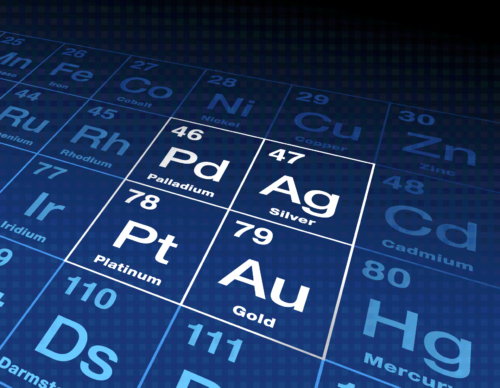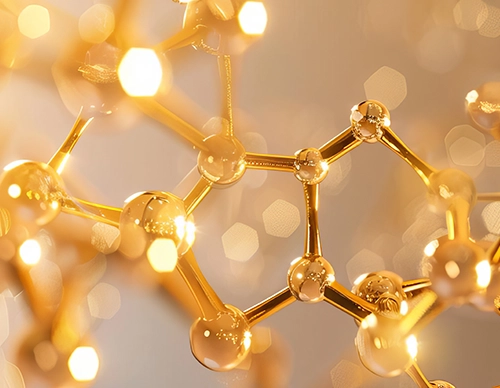Applications for Precious Metals
Calculate the following, based on your actual alloy chemistry:
Application Examples
Castability of Pt-base Alloys
Castability of traditional platinum jewelry alloys can suffer if the solidification temperature range is too narrow. An additional challenge is the need to limit the alloy content to maintain the value and noble properties of the jewelry. Thermo-Calc can be used to calculate the non-equilibrium solidification behavior of such alloys and investigate the effect of composition using the included Scheil Solidification Simulation Calculator.
In this example, it is shown that the addition of Co to a Pt-Ru alloy can increase the solidification temperature range leading to improved form-filling during casting. Thermo-Calc can also be used to predict the extent of microsegregation, although in this work, Klotz et al. found no pronounced segregation of platinum for the Pt-1.5Ru3.5Co alloy (recalculated from Klotz, et al., Johnson Matthey Technol. Rev., 2015, 59, (2), 132–14).

Improving Casting Design of Platinum-Copper Alloys
Platinum-copper alloys are commonly used in jewelry making. This alloy system provides for good workability and machining characteristics. However, casting can be difficult. To improve casting design, thermophysical properties such as density, thermal expansion, and heat capacity are often needed as inputs to casting simulation software. Thermo-Calc can be used to provide such properties to investigate the influence of composition and temperature.
In this figure, Thermo-Calc was used to calculate the density of Pt-Cu alloys as a function of Cu content for two temperatures. As shown in the figure, the results correlate well with physical experimental measurements (experimental data from Mehmood, et al., Thermophysical Properties of Platinum-Copper Alloys. Metall Mater Trans A 43, 5029–5037 (2012).

Screening the Color of an Alloy System
When selecting an alloy system for cosmetic purposes, the color of the alloy is of utmost importance. Therefore, users may want to explore the colors in a given system based on composition and heat treatment. Thermo-Calc Software offers a Noble Metal Alloys Model Library with one model that can be used for various applications, including screening the color of an alloy system.
The plot shown here is for an Au-Ag-Cu system. In the example, the entire composition space was screened with a 2 wt.% step size. The alloy microstructure was obtained at each step as annealed at 873.15 K to obtain the equilibrium phases and their respective compositions for accurate color prediction. The standard illuminant is D65 noon daylight, with a 2˚ standard observer viewing angle. The material is assumed to be opaque with a thickness of 10,000 nm.

Designing a Green Gold Alloy by Adjusting Ag Content in Au-10Cu-xAg Alloys
Noble metal alloys are frequently developed for the purpose of achieving an attractive color. The Optical Properties Model in the Noble Metal Alloys Model Library can be used to design specific colors of gold alloys, such as green or purple gold.
The plot here shows the change of color difference (ΔE) between the targeting light green gold color and the simulated alloy color when changing the content of Ag. Delta E (ΔE, dE) is a metric to understand how the human eye perceives color difference and there are several standards for calculating Delta E in use today. On a typical scale, the ΔE value ranges from 0 to 100. The larger the ΔE value, the more perceptible the color difference. The target color in the Lab color space is [95, -13, 25], representing a light green shade.

Visualizing the Impact of Alloy Thickness and Light Incident Angle on Color
Alloy thickness and light incident angle can impact the color of an alloy. The Optical Properties Model in the Noble Metal Alloys Model Library can also be used to visualize this impact, as shown in the plot here for an Ag-Au-Cu system.
For this example, intercritical annealing was not selected, as all elements were assumed to dissolve in the FCC phase of pure gold. As can be seen in the plot, as the material thickness increases, the color of gold tends to approach the bulk gold color observed in macroscopic samples.





